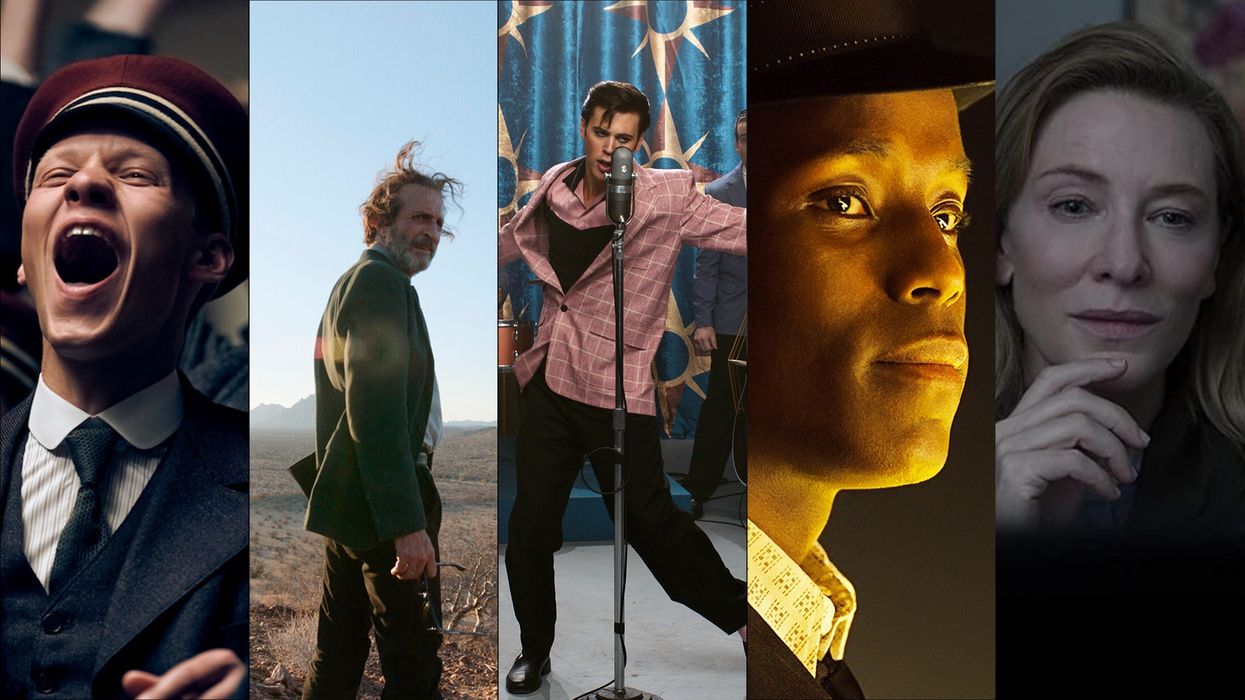What the Cameras of the 2023 Academy Awards Reveals About the Future of Hollywood Movies
The nominations for Best Picture and Best Cinematography seem to lead to a large format future.

Whether you believe the Academy Awards are an elaborate marketing plot to sell more movies or you truly believe in the magic, we won’t don our rose-colored glasses for this article.
After the last week or so, we’ve all had some time to deal with this year's Oscar nominations, Oscar snubs, and an upset that still has people talking, but we haven’t had a chance to understand what the nominations mean for the future of movies.
What did we discover? Almost all of the movies were shot in large format. So, what is that, and what does this trend mean for moviegoers and filmmakers alike?
The Nominated Films
First, let's take a look at all the nominated films for Best Cinematography, as well as who the Director of Photography was and what tools they used to capture these movies.
All Quiet on the Western Front
- Director of Photography: James Friend
- ARRI Alexa 65 and ALEXA Mini LF
- ARRI Prime DNA and Prime 65 S Lenses

Bardo, False Chronicle of a Handful of Truths
- Director of Photography: Darius Khondji
- ARRI Alexa 65
- Panavision Sphero 65, Tribe7 Blackwing7, Canon FD-L

- Director of Photography: Mandy Walker
- ARRI Alexa 65, Panavision Primo, Sphero 65, T-Series, and Petzval Lenses
- ARRI Alexa LF, Panavision Sphero 65, and T-Series Lenses (some shots)

Empire of Light
- Director of Photography: Roger Deakins
- ARRI Alexa Mini LF
- ARRI Signature Prime Lenses
- Cooke S7/i

- Director of Photography: Florian Hoffmeister
- ARRI Alexa 65, ARRI Signature Prime Lenses
- ARRI Alexa Mini LF, ARRI Signature Prime Lenses

A Large Format Future?
In cinematography terms, large format refers to any frame or sensor larger than Super 35. The term full frame is also used (as it often is across the internet), but that belongs in the world of photography. So, let’s ignore it for now.
When looking at all the 2023 nominations for Best Cinematography, we see that there is only one camera that stands out — The ARRI Alexa. All of these films were shot on a variation of this camera.
But not just any Alexa. Save for one film on the list, all of the nominated films used an ARRI Alexa 65. This camera has a frame size of 54.12mm x 25.58mm, which is massive.

For comparison, Super 35 film in a 4-perf configuration is only 24.89mm × 18.66mm. To further compare, the ARRI Alexa LF has a 36.7mm x 25.54mm sensor, while most Sony cameras adopt a 36mm x 24mm frame.
What we’re seeing from blockbuster movies vying for an Oscar nomination is the necessity for a bigger frame. Perhaps this is an attempt to differentiate the theater experience from what you get via streaming. But All Quiet on the Western Front and Bardo were Netflix releases, and barely spent any time in theaters.
Also, these are only the nominations for Best Cinematography. What about those for Best Picture?
Yeah, What About Best Picture?
Three of the films nominated for Best Cinematography also got nods for Best Picture. The rest of the nominated films are Avatar: The Way of Water, The Banshees of Inisherin, Everything Everywhere All at Once, The Fabelmans, Top Gun: Maverick, Triangle of Sadness, and Women Talking.
We’ll toss out The Fabelmans because the only way Steven Spielberg will ever shoot digitally is if you put the camera in his cold dead hands. His world seems to be firmly planted in Super 35.
Apart from that, every other film was shot in a large format, except for Everywhere All at Once. Those lads used an ARRI Alexa Mini, which has a Super 35 sensor.

The Death of Super 35
When it comes to movies vying for screen time in theaters, it seems the choice to use a Super 35 cinema camera is slowly becoming a thing of the past.
What does this mean for filmmakers? Well, it seems the return to the day of Lawrence of Arabiaand 70mm is upon us. This doesn’t mean you should go out and buy a large format camera to shoot all your films, as they’re still widely used in television and independent film.

But it does mean that we should remember to focus on the spectacle of it all.
Going to the movies is always a spectacle. The screen is always going to be bigger than what you have at home, and there aren’t any distractions to interrupt the experience of storytelling. The focus is shifting to a bigger frame, either because the technology allows it or the movie-going experience demands it.
While modern filmmakers are now forced to have their movies screened on TVs, laptops, and smartphones, they shouldn’t forget that the stories we tell should be grand and larger than life. Even if those stories are all about the small moments in life.
What do you think this means for the future of movies? Let us know in the comments!
Source: Variety











